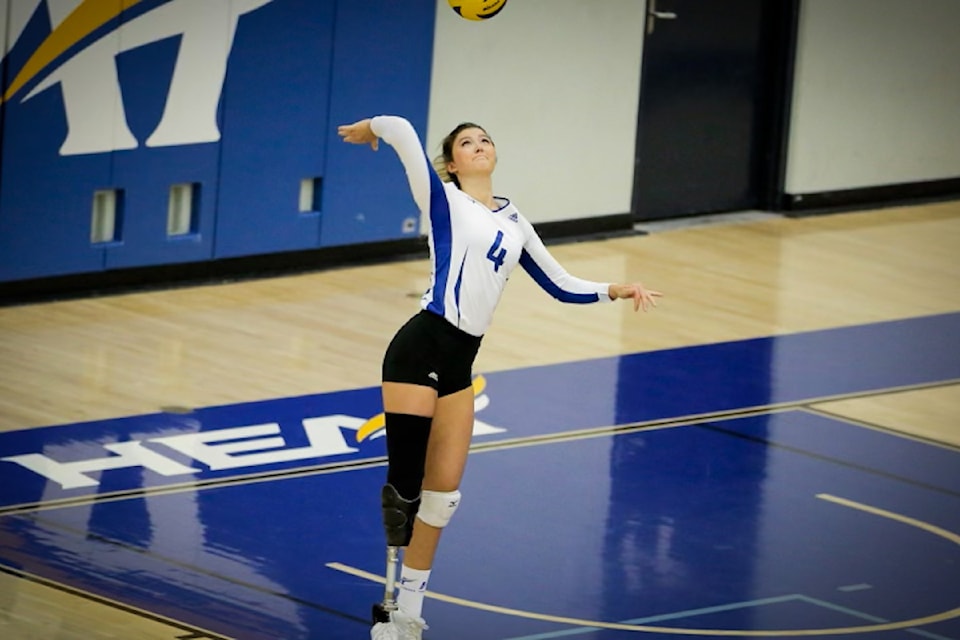At the age of 17, Jennifer Oakes' life was forever changed but her work ethic, outlook on life and love for sport were left untouched. She is now preparing to compete in her third Paralympic Games with the Canadian Women's Sitting Volleyball team.
Nine years ago, Oakes was pulled from the water and airlifted away from her family cabin by STARS Air Ambulance after sustaining a severe injury to her leg in a boating incident.
Once landed at the hospital, Oakes underwent emergency life-saving surgery followed by numerous painful revisions and skin grafts in an attempt to save her leg.
"I knew I wanted to get back into sports as soon as I woke up in the hospital," said Oakes during a phone interview between practices at Team Canada's training base Edmonton.
While lying in a hospital bed, Oakes, surrounded by her family, learned that the surgeon had decided to remove her lower leg after a final operation.
"One of the first questions I asked my surgeon is: When can I play volleyball again?'" said Oakes.
Before the surgeon could answer her question, she was scolded by her worried mother for asking about volleyball while there was still an IV in her arm.
"She said: Jennifer! Focus on your recovery," recounted Oakes with a laugh.
Although it made her mom nervous, setting goals and planning for the future was an important part of Oakes' recovery. She had always been a high-level athlete and had dreams of competing on the world stage.
She was not going to let the injury change her outlook on life or alter her aspirations.
After the amputation, Oakes had to wait months for her leg to heal so that she could be fit for a prosthesis.
During that time, she dedicated herself to an intensive rehabilitation program, got strong and got back on the volleyball court.
"I had to relearn how my body moves," said Oakes.
Her body and mind ended up being ready before the prosthesis and Oakes played a volleyball game without it, jumping and diving on one leg.
In addition to the physical training and rehabilitation regiment, Oakes researched everything. She immersed herself in information about Paralympic sports, types of prosthesis, and what opportunities were available to her.
Almost one year to the day after Oakes was air-lifted from her family cabin, she boarded a plane and set off for the Rio Olympics with Team Canada in 2016.
On the seated volleyball team Oakes plays the position of setter, a similar role to a football quarterback. She has quick reflexes and an innate ability to read the game to anticipate where she needs to be to set up plays.
After her debut as a Paralympian, Oakes flew to 琉璃神社 to join the University of B.C. Okanagan Heat Volleyball team.
"They all helped me catch up on homework," said Oakes about her friends on the Heat, as she had missed the first week of classes while playing for Team Canada in Rio.
At UBCO, Oakes played the position of libero, a back-row specialist that is tasked with diving to get the ball up and in-play after it is spiked over the net.
Oakes continued to train with the national sitting volleyball team while playing varsity volleyball and made her second Paralympic team in 2020.
She said the team did not achieve their goals in Tokyo, despite having placed in fourth, and have since dedicated themselves to becoming the best in the world over the last four years.
"We have not settled," said Oakes, now 26. "We pushed boundaries and pushed limits. We are very committed to growth."
To prepare for the Paris Paralympics, the team practiced together out of Edmonton and have flown around the world to compete in international tournaments.
In the months before the Games, training ramped up and the athletes trained together numerous times each day both on the courts and in the gym.
Team Canada is now ranked in first place and is one of the favourites to win gold in Paris.
"It's all coming together," said Oakes.



